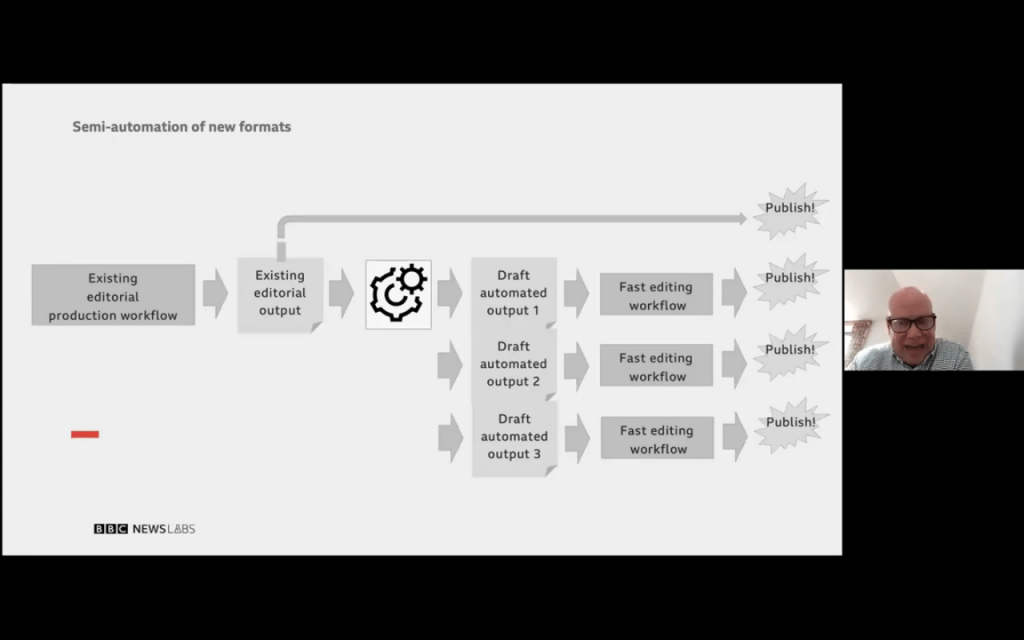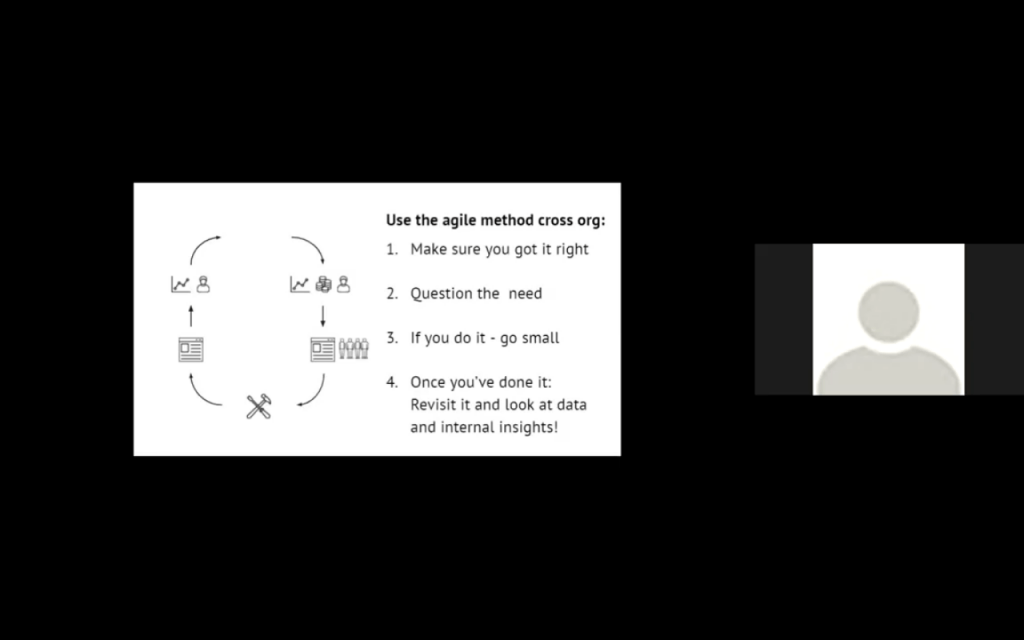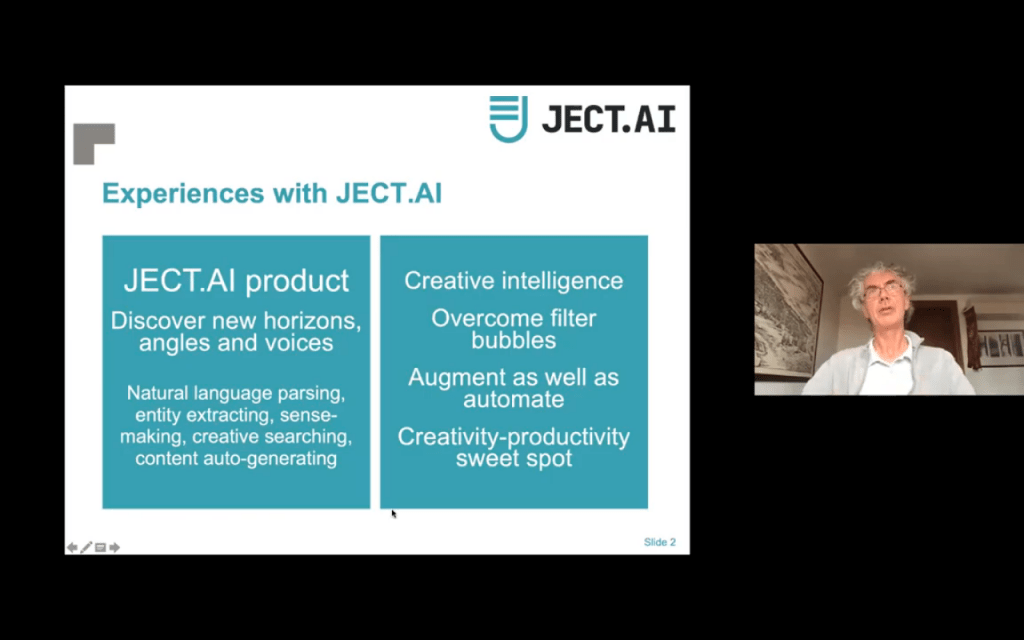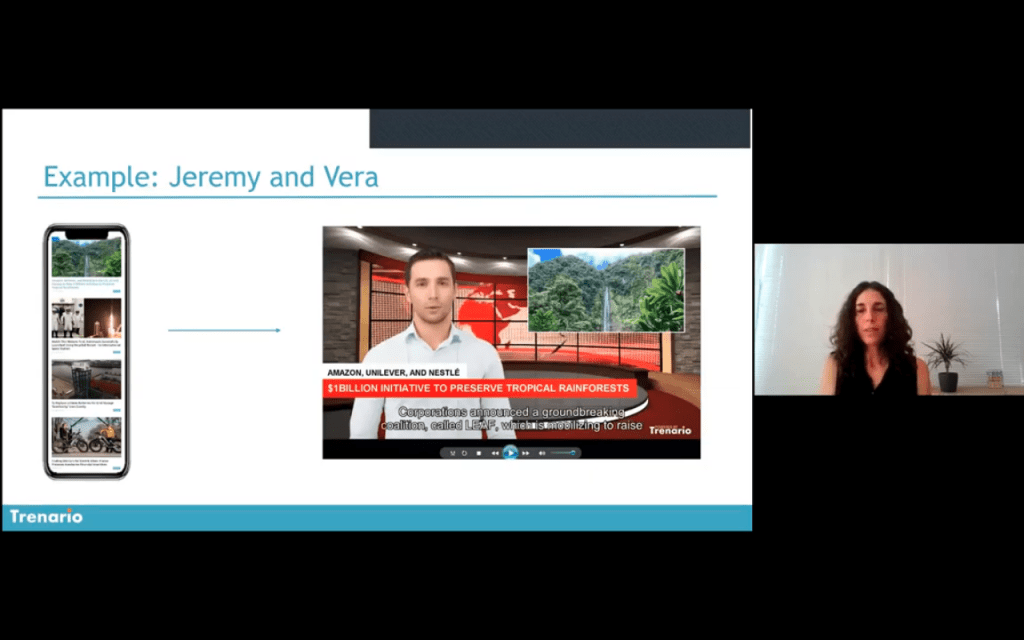How can AI help improve newsroom productivity?
The GAMI Briefing #1 looked at how news publishers and journalists are using AI-powered solutions to work more efficiently, what kinds of issues arise when these tools are introduced in the newsroom, and what solutions exist to deal with such challenges.
- (Semi-)automated processes save time, but keeping human agency can lessen potential trust issues
- AI can help newsrooms get more out of what they are already doing: article summaries, multiple story formats, videos…
- Editorial teams might be suspicious of (semi-)automated tools, but time and diplomacy helps them get on board
The virtual GAMI Briefings are an opportunity for the media innovation community to learn and exchange on the most pressing technology trends that impact the news publishing industry. Each event explores a specific topic with a solution-based focus, highlighting case studies from our network of media organisations and startups.
The first event in the series focused on the challenges and opportunities that artificial intelligence represents for newsrooms. As new AI-based tools are becoming increasingly available, many news publishers are rapidly investigating how this technology can help them work more effectively – and how they can deal with the challenges that sometimes arise when such tools are implemented.
First, David Caswell, Executive Product Manager at BBC News Labs, discussed how UK’s public broadcaster uses an AI-solution that extracts information from existing text articles in order to create new editorial formats for news stories. This allows the BBC to tailor the content based on the needs of its readers, in a context where news audiences are more fragmented than ever.
“We’re trying to compete to serve value to all these diverse audiences, and we basically got one website and one app to do that with. And that’s a problem if we’re trying to deliver a universal service, because our mandate as a public service organisation is to deliver value to everybody,” he said. “If those audiences are very diverse, if they have almost infinite choice, and we have one app and one website, then we’re limited in what we can do. Because of that limitation we’re essentially required to personalise.”

The BBC’s solution is to use a different presentation of news content to different people. It uses semi-automated tools, operated by journalists, that use existing articles to create draft outputs in different formats. Journalists can then verify the content and make edits on wording and images before publishing it. “So with small changes to the existing workflow we can get multiple story formats,” Caswell said.
Next, Katarina Ellemark, Product Owner at Bonnier, talked about how Bonnier News Local has implemented new technical solutions, and how it has taken learnings from these experiences and fed them back to the newsroom.

Ellemark described different examples where the publisher was trying to introduce new tools into the workflows but faced opposition from the newsroom. One case concerned including granular metadata into news articles. Journalists initially protested to this, citing a lack of time for this process, but through discussions the newsroom realised that adding more metadata will help the publisher serve the right content to the right people.
Another case involved personalised news feeds, which increased readership levels but made it impossible for editors to see what stories were displayed for each individual reader. “Editorial teams needed a great amount of time to get used to this. For a while I was working as a therapist,” Ellemark said.
“We talked a lot about the edge cases, the newsroom kept sending screenshots so that I could see how the system was working, and a frequent question was: ‘Why wasn’t my piece pushed?’” But also in this case, after numerous meetings and discussions, the newsroom was ultimately convinced of the benefits of the personalised feed.
Can digital technology augment both journalistic creativity and productivity? This was the argument by Neil Maiden, Director of CebAI, the National Centre for Creativity enabled by AI at City, University of London: “There may be an interesting sweet spot that certain types of technologies deployed in certain types of way may help us reach towards in newsrooms.”

Maiden specifically discussed JECT.AI, a digital tool that assists journalists and editors to discover new horizons, angles and voices for stories. Currently, when seeking an angle for a story, Maiden said that most journalists use tools such as search, Google News, specific websites, other news sites, and contacting people. “However it’s quite a clunky activity, and there’s surprisingly little guidance for that.”
Instead, JECT.AI pulls in a lot of this information in one place, Maiden said. “We didn’t just automate the journalists’ research activity, we sought to augment it by bringing in filtering to reduce information clutter so you could see essentially one relatively small information box in the tool.”
Moreover, when journalists look for experts or new sources, JECT.AI can suggest scientists that have published on a specific topic. “We also discovered an opportunity to not just present the usual suspects related to a topic. We integrated an additional algorithm that would seek to balance the experts by both gender and ethnicity.”
Finally, Dina Shatner, Co-founder & CEO of the startup Trenario, talked about how the company’s solution automatically generates video content with AI-driven news presenters. There’s an increasing demand for video content, and video gets more engagement on social platforms and among younger age groups, but newsrooms struggle to take advantage of this with limited budgets and resources.
Trenario’s tool allows publishers use text to create newscasts with digital hosts, which can be of different genders, age groups, ethnicities, and can speak different languages. The company’s solution also allows for the personalisation of the video content.

“Our mission is to make it easy for newsrooms to leverage what they are doing by automatically turning text content into a wide range of video stories,” Shatner said. “There’s no need for cameras, crew or video editors to create a presented-led video. And there’s no need to learn a specific skill set to work with complicated platforms.”
New tech comes with new challenges
The Q&A after the presentations started with a conversation about how audiences relate to automated news content. Caswell referred to work by Neil Thurman at LMU Munich, which perhaps surprisingly has showed that audiences seem to trust automated news content slightly more than human-written stories. On the other hand, they rank the readability and enjoyability of automated content a little bit lower.
Some wonder if journalists should try to explain to their readers what technologies they use to generate content, but Maiden pointed out that many of these technologies are so complex that this is not a realistic goal. Moreover, keeping a human element in the publishing process may help alleviate potential trust issues.
“To what extent should a tool be able to explain its own creative processes, when we probably don’t have the same expectations on humans when they create stories. Do we sit the journalist down with a spotlight and drill them on how they came up with an angle?” Maiden said. “As long as there’s human agency in there to intermediate decisions, I’m relaxed on that.”
On the other hand, as it gets easier to create deep fakes and other misleading photo and video content, it is important for people to know when they are watching digitally created humans, Shatner added.
According to Caswell, one big challenge in newsrooms is that their cultures are not suited for the kind of thinking that forward-looking tools require: “The need to think abstractly and strategically about all of this stuff is difficult, and it’s particularly difficult for newsrooms because the whole business of news has been about specific stories on a specific deadline. It hasn’t traditionally been a field where there’s a lot of standing back and thinking about the wider patterns,” he said.
“Someone is going to use all this stuff for news purposes in one way or another, and I really hope that we’re able to do it with professional values-drive journalism. But the same tools are available to the entire media ecosystem,“ he added. “I sometimes worry that folks don’t appreciate that it’s not decades away, it’s months or maybe a few years away at most.”
*****
Save the date: GAMI Briefing #2 will take place in the afternoon of 8 June 2021 (date to be confirmed) on the topic of Blockchain for trust in the newsroom: practical applications.
(Photo by Markus Winkler on Unsplash)
